By Dan Weisz
I was taking care of a neighbor’s house in th Foothills while they were out of town and saw that two common desert birds regularly perched atop a local desert hackberry bush.
The first bird was a male Phainopepla (pronounced Fay-no-pep-luh). Because of his crest, people often call it a Black Cardinal or a Desert Cardinal, but he is not related to cardinals at all. His beak is much slimmer letting us know he is not a seed eater like a cardinal but is an insect eater. The Phainopepla is part of the family known as Silky Flycatchers and its name comes from the Greek for “shining robe” for its shiny black feathers. I like this photo because it shows one of its main food sources in the desert: mistletoe. You can see the red mistletoe berries as well as the mistletoe seeds that have made their way through the bird and been deposited below the bird’s perch!!!
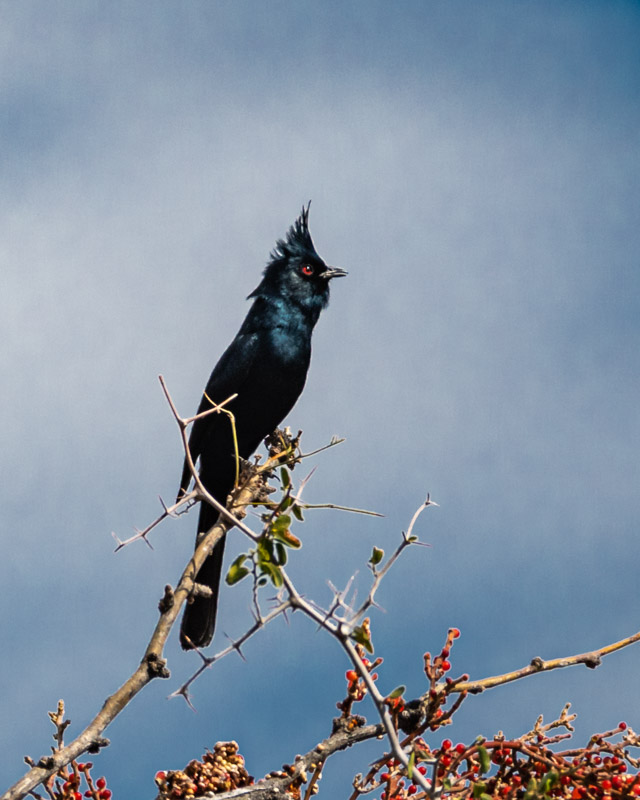
Another look at this bird shows the Phainopepla’s bright red eye. His crest is flattened in this shot but there is another pile of those telltale mistletoe seeds beneath the bird! Phainopeplas have digestive tracts specialized for eating mistletoe fruit. The berries are low in nutrients and spend only about 12 minutes in a Phainopepla’s intestine. One bird might eat over 1000 berries in one day.
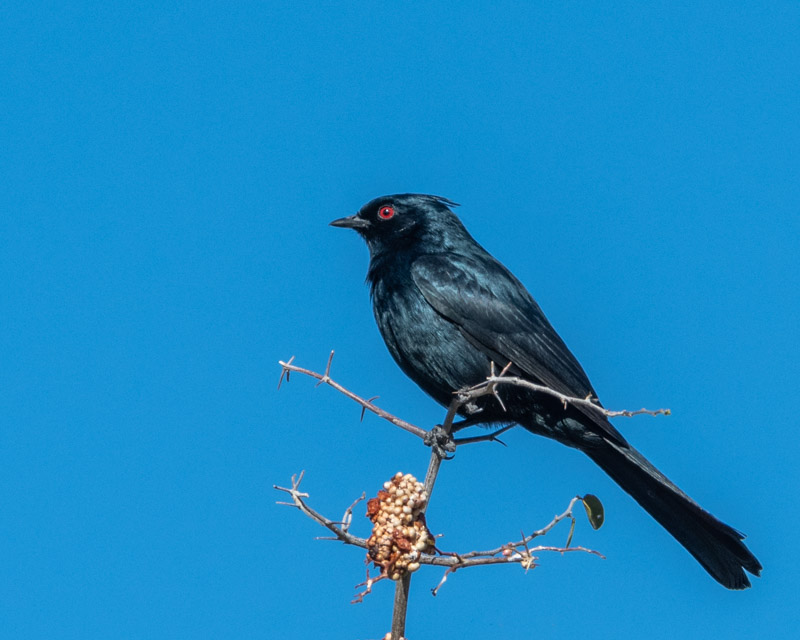
Phainopepla males have white wing patches that show when they fly. The male will land atop another bush or tree and then make his distinctive call to mark his territory: PhainopeplaCalling https://www.xeno-canto.org/455608
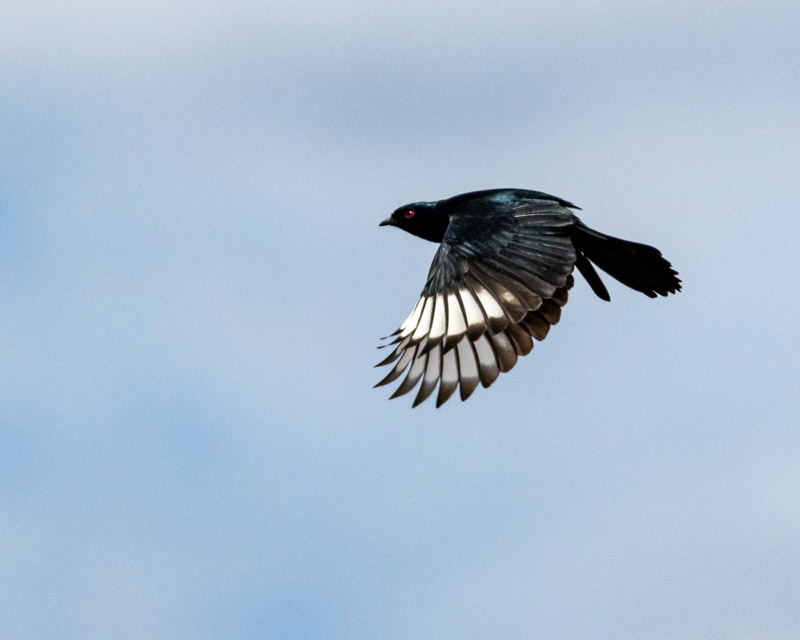
The other desert bird that was present was a Curve-billed Thrasher. You can see how this bird got its name. That long bill helps when it forages for insects among spiny cacti and when the bill sweeps back and forth through the debris on a desert floor.
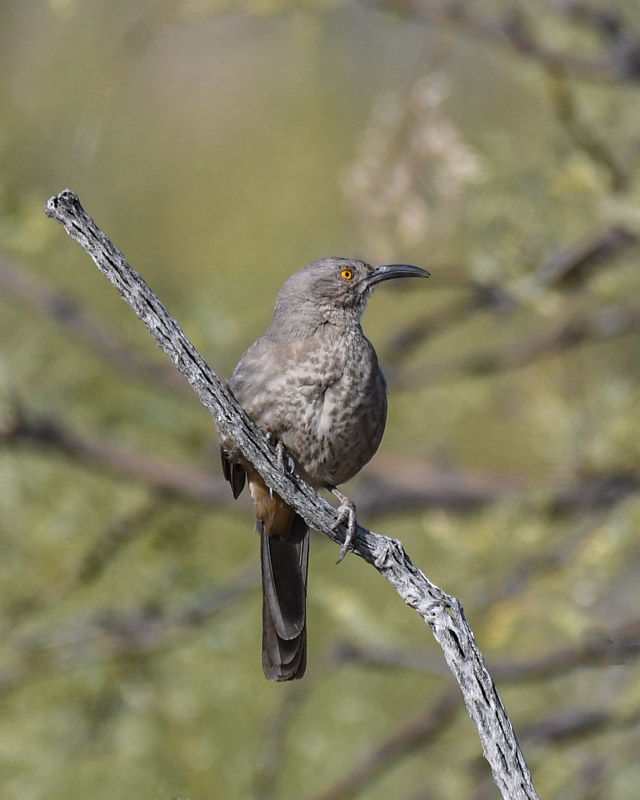
Curve-billed Thrashers will be one of the first birds to call each morning just before sunrise as well as just after sunset, when the air is the most calm and and their song can carry the farthest through the desert sky. But they will also call throughout the day: CurveBilledThrasherCalling https://www.xeno-canto.org/497305
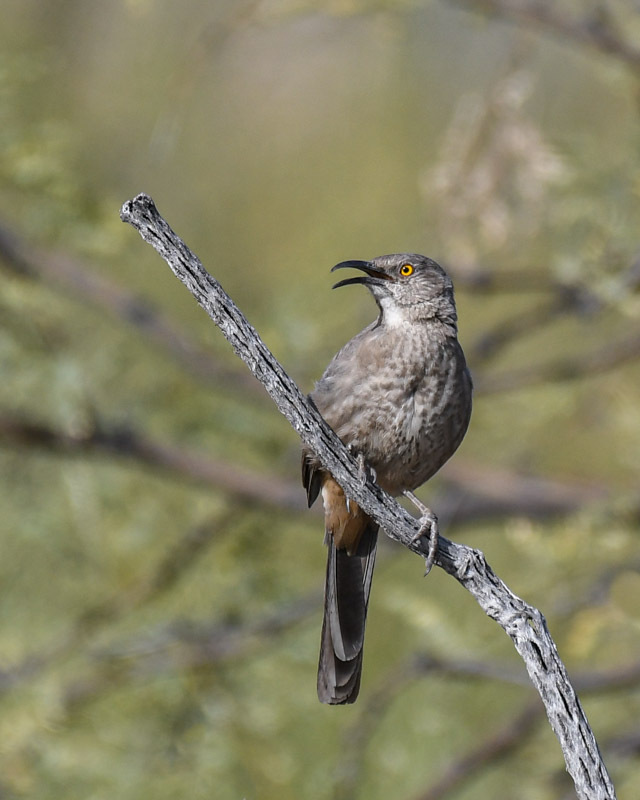
On another day the same Phainopepla perched atop the same desert hackberry bush but on the tip of another branch.
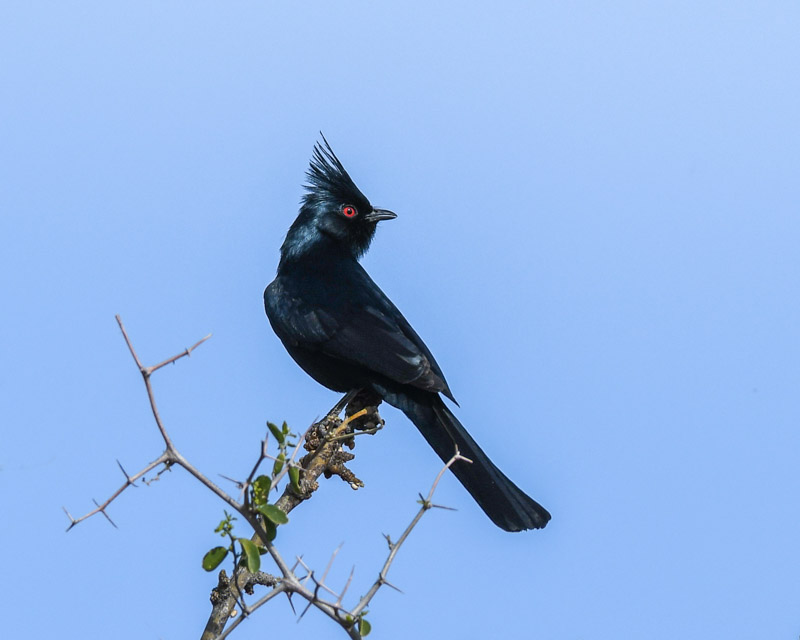
Later he continued to call, claiming another spot.
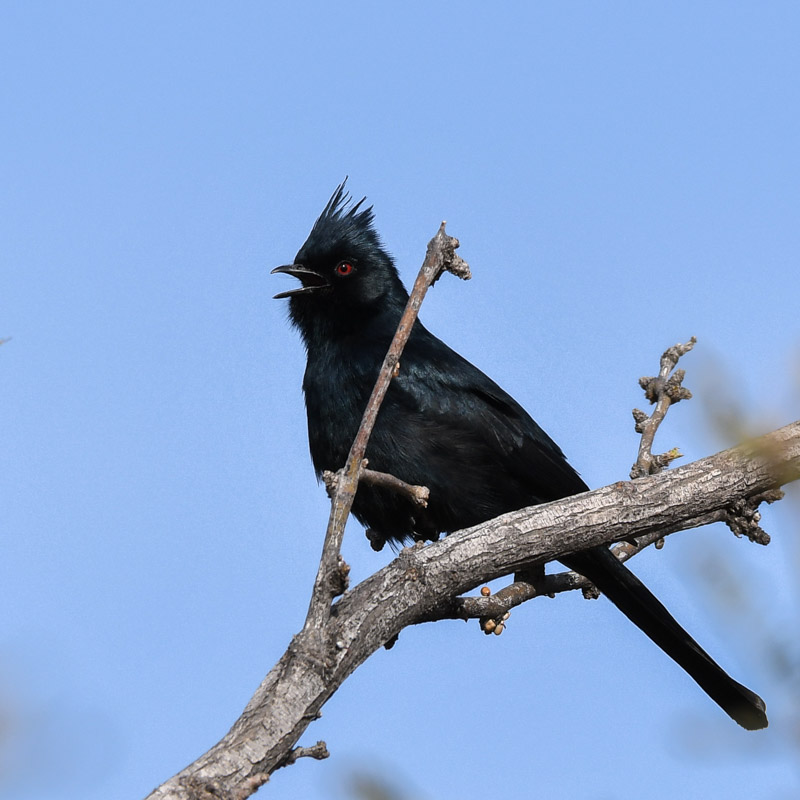
As I was watching the Phainopepla for the shot above, a Curve-billed Thrasher flew in and chased him off of its perch. You can see that the Thrasher is sitting on the same branch as the Phainopepla above, but just about three inches further to the left.
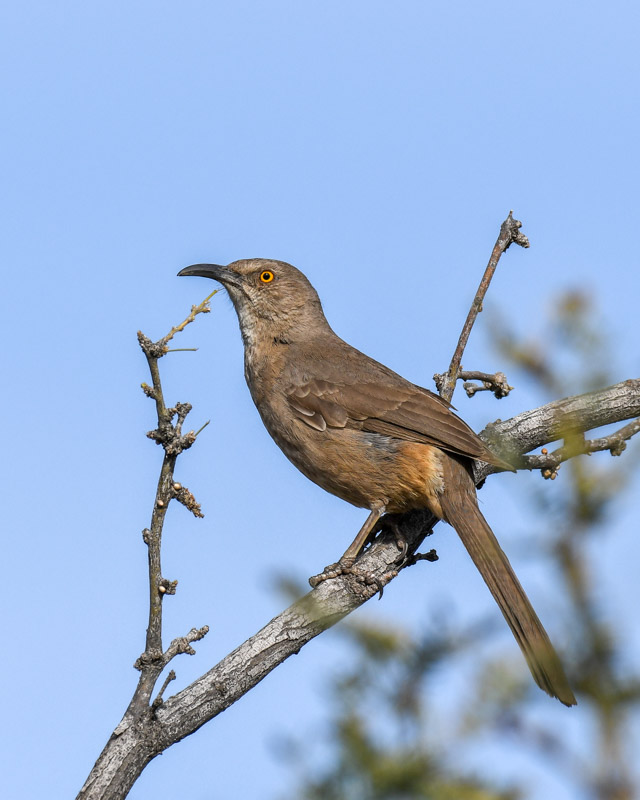
These two birds kept me company on many mornings.
